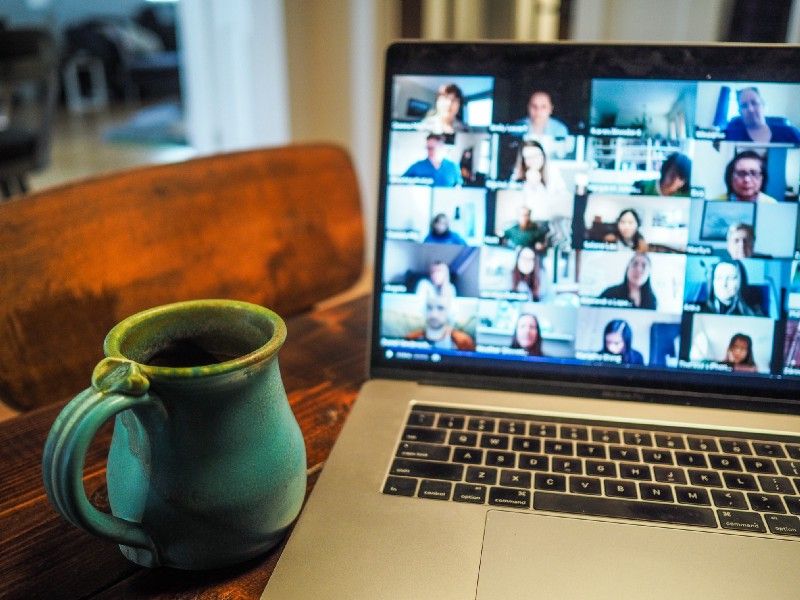
Retrospective meeting on a remote setting

Running inspection meetings, like the retrospective, is vital for all teams that want to evolve. A successful retrospective promotes open communication and improves teamwork among peers. Building a foundation for better communication and collaboration, the teams can be more productive and successful at producing positive outcomes.
In this post we’ll explore how the retrospective meeting adapts to the needs of a remote team, so keep reading.
What is a retrospective
According to the Scrum guide, a Sprint retrospective is an inspection of “how last Sprint went with regards to individuals, interactions, processes, tools, and their Definition of Done”. Following the Scrum Guide, the purpose of the Sprint retrospective is to plan ways that increase quality and effectiveness of a team.
We can extend this definition to non-sprint retrospectives and keep the same purpose, to increase the quality and effectiveness of a team.
Α retrospective is an inspection of how the past period went with regards to individuals, interactions, processes, tools, and on the goals that the team set.
How a remote team is different?
A remote team’s core characteristics are:
Team members that are physically located in different places, e.g. their homes, or different countries
Team members that have different working hours, e.g. due to different timezones, or different schedules
The remote team still collaborates towards common goals. Team members need to coordinate and work together to achieve these goals. Each team working remotely is expanding the above characteristics and builds more habits that make the team work better.
The way that a remote teams works is for:
Team members to work independently. Each member has an autonomous task to work and be responsible for.
Asynchronous communication, so when a member is sending a message to the team the default is to wait for some time for a response. The response will not be instant — synchronous.
Team collaboration and synchronous time that needs to be planned for. The team has some meetings to sync and assist collaboration and delivery of work.
A remote team is relying more on tools that assist the way of work. Tools that help with async communication, collaboration, and sharing of information. Having the right tools in place helps a remote team build habits and excel in their craft.
Performing a retrospective with a remote team
A successful retrospective for a remote team leverages all the characteristics of the remote setting. You will need a tool that allows participants to:
Contribute independently
Participate asynchronously
Have access to all information shared by their peers
Group for a synchronous discussion when needed
With all the above in place, you set the conditions to turn the retrospective ceremony into a team habit. Here are the steps that will help you get there.
Setup your retrospective
For starters, you will need to set up the retrospective for your remote team. Setting up a retrospective is important to think about the period you will be inspecting with the team; is it for the last weeks, or the period it took you to get to a milestone? Going past that, you choose from a set of retrospective activities the one that suits your needs. There are activities for future thinking (futurespectives), reflection, celebration, etc. All activities are promoting open communication and team bonding, so that each team member can freely share findings.
When you are ready with the setup, you can invite your team members into adding their notes. You can do that via email of the company messenger tool you are using. It is important to educate the team on the period of inspection, and the specifics of the retrospective activity.
Add your notes
At this point, each team member can enter the retrospective to add their notes. Since the team works remotely, you can inform them to add notes within a specific period, spanning for a few hours to some days. There is no need for everyone to be on a call, or a meeting to add their notes, each one can do it on their own time. When the specified time has passed, you can share a last ping — via email or a message — and then inform your peers that the retrospective is moving on to the next step.
Grouping notes
With all notes added the retrospective proceeds to the next step, sharing notes and clarifications. At this point all the notes are visible to the whole team. Participants can identify notes that are similar and need grouping, or obscure and require clarifications. You can ping for clarifications the person that added the note, via email or a direct message.
There are two options on handling this step as a team:
Continue asynchronous, and set a facilitator to group and clarify notes on behalf of the team.
Have a synchronous meeting, to group and clarify notes together.
Voting most important notes
When the grouping step is complete, you can ping your colleagues to cast their votes on the items of importance. Each member can cast their votes at their own time, asynchronously. Doing that async and not in a meeting is excluding any bias due to talking while casting votes. You can set a specific time limit for the voting step.
Discussion and action items
With all team members done voting, you can proceed to the final step of the retrospective, the discussion. This is the only step of the retrospective that the remote team needs to get together and talk. You can send a meeting invite to the team and share the voting results. Sharing the voting results beforehand you provide space for review.

When you all meet together make sure to follow the etiquette of online meeting:
Provide space for everybody to share their thoughts on the topic of discussion
Try not to interrupt the speaker
Keep the discussion within the topic
Keep the discussion within the specified time
The retrospective format can lead you to long discussions. The topics are always relevant to the team and everyone feels strongly about each item. Please remember to:
Be polite
Keep the discussion around team improvements, avoid going personal
Focus on getting up to 3 action items, no more
When you finally conclude with the discussion and action items, the retrospective is considered complete. You will need to inform all participants of the resulting action items and plan how you can start addressing each one. To achieve that you can use helpers as tasks in a ticketing system (e.g. Jira, Asana, Trello), reminders in your company messaging app, or email reminders.








